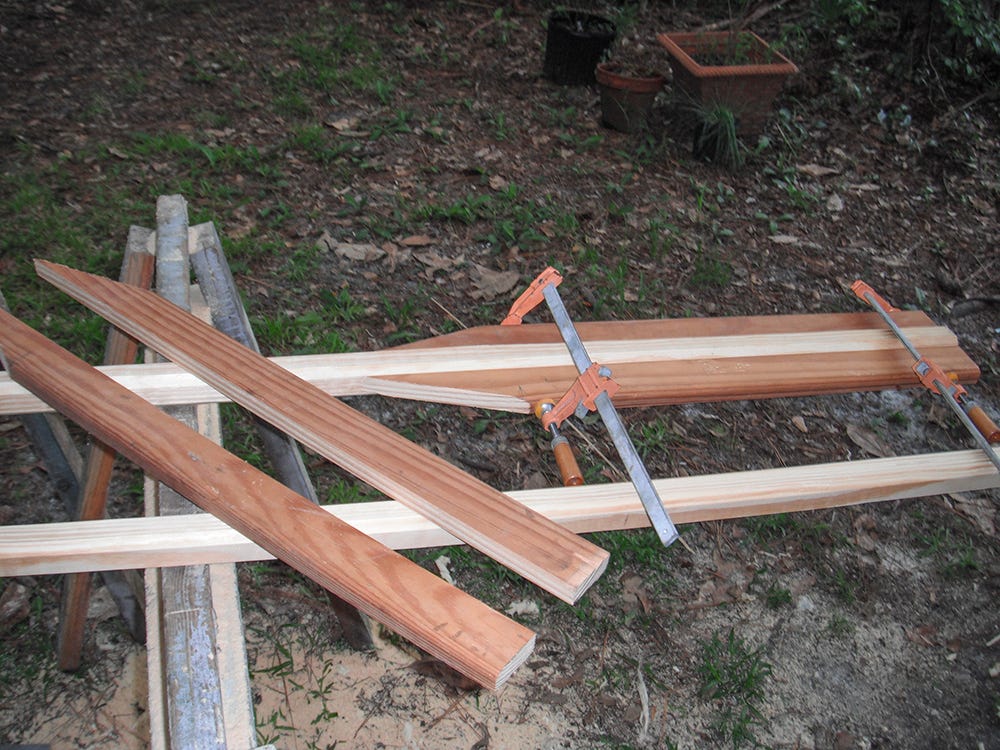$4 Oars
If a $3.90 set of oars can get you where you want to go, why spend $200 on a “pretty” set?
BY CONNIE MCBRIDE
In life in general, but especially when dealing with boats, there are two philosophies. There are those who worry about how things look, what the neighbors will say, the impression left with others when they see a particular object or witness a behavior, and there are those of us of the mindset that if it works, it’s the right way to do it. If a $3.90 set of oars can get you where you want to go, why spend $200 on a “pretty” set?
Having said that, there is still a time and place for “nice” things. Dave handcrafted a beautiful set of oars for our Fatty Knees. He spent more time on them than he could ever charge a customer for, but they were a project he’d wanted to do for many years. The oars were his reward to himself for having survived a decade of life afloat with three boys. But when one of those boys needed a dinghy (and therefore oars) for his transition back to the floating life, time and money were rare commodities. In this case, function was the primary goal. Thus, the two Daves built a set of oars for under $4.
They started by downloading a free set of oar plans. They chose these particular plans because the oars were simple and cheap to build. They bought a 2″ x 6″ x 8′ piece of Southern yellow pine for $3.90. The plans call for a 2″ x 4″ x 8′, but in order to get clear wood for the shafts, they had to buy a bigger board. Following the plans, they cut out shafts and blade halves on the table saw and with a Japanese handsaw. Dave ran the shafts through the table saw again at a 45 degree angle to make them octagonal. You could round the shafts to make them more aesthetic, but they were more worried about strength than looks, so they left them octagonal.
Where the blade halves were to be glued to the shaft, Dave made a single kerf cut, the width of a table saw blade. He cut these about 3/8″ deep. When the pieces were glued together, this allowed the thickened epoxy to act as a spline, increasing the strength of the glue joint.
After the epoxy cured, Dave shaped the blades with a power plane and grinder. At one point he was a little overly zealous in his shaping and took off more wood than he should have. He epoxied scraps back onto the oar, let it cure, and reshaped it. Accidents happen. The trick is knowing how to correct them. Later, he cleaned up all surfaces by hand with a block plane. They left the oar handles unfinished, since they weren’t sure how long David was going to want the oars. The maximum length they can be is 7′ 1″ because that is the available length of their new dinghy. With a wife who is new to boating, and a 2-year old, it is important that the oars fit on the seat rather than hanging over. Once the dinghy is painted and splashed, David can sit in it and determine the best oar length for this particular design of dinghy.
The oars were finished by the time the dinghy was, so they got a coat of paint every time the dinghy did. There is less product and time wasted in combining as many of your epoxying or painting projects as possible. Dave’s motto of “You can’t cover anything with one coat of paint” was amended for this project to “You can never have too many coats of paint.” These oars are going to be daily transportation for our son and his family when they begin their liveaboard life. They need to be strong, practical, and fit their budget. At $3.90, I think they’ll do just fine. •SCA•







I've done a fair amount of rowing and none of the four types of oar locks shown in plans referred to here are much good. You need to have oar locks that permit feathering of the oar if you are going to do any serious rowing. If you can't feather your oars, it is very hard to row into the wind. That eliminates one of the four types of locks shown, the one that clamps onto the oars. The problem with the other three types of locks shown is that when you use them, the oar tends to creep inward, and you have to keep pushing the oar out. The best type of oar lock is one with a thole pin on the gunwale, then a loop of rope or metal to keel the oar up against this pin. The pin is usually removable from the gunwale and stays with the oar and the loop. Duckworks sells such an oar lock. I do like this plan for oars though and I intend to try them out soon for the gunning dory I am building.
Great Article!!....Almost makes me want to build another skiff...so I’ll need another set of oars!!!